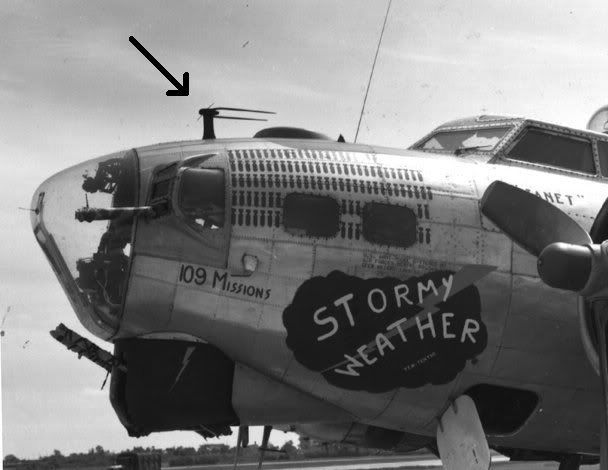k5dh wrote:
Speaking of B-17 radio antennas. . .
Does anyone here have accurate, detailed information regarding ALL of the radio antennas used on B-17s in the 1944-1945 time frame?
Cheers!
I could do with this info too, should anyone have it.
I have the antenna diagram for the B-17F, but not for the B-17G.
I can add this though, from a series of articles I've written for another forum:
From August 1942 the 8th AF used the RAF Lorenz blind landing system, usually called SBA (Standard Beam Approach).
This was an audio-visual system, utilising a pair of ground markers, one at the end of the runway in use and the other a couple of miles away on the approach line.
The redundant RC-43 Marker Beacon antenna (underneath the fuselage of the B-17, just forward of the tailwheel) was usually used as the reception antenna.
This was replaced in service by the American SCS-51 Instrument Landing System from mid-1944.
The aircraft component of the system was the RC-103, later designated the AN/ARN-5, with the distinctive horned antenna on the aircraft's nose as seen arrowed below.

The landing path was indicated to the pilot via a dial with two moving needles to show the aircraft's position relative to the approach line.
The receiver unit for the ARN-5 system was the BC-733:
Radio Receiving Set, BC-733
Nomenclature: Radio Receiving Set
Components: BC-733 Radio Receiver, DM-53 Dynamotor
Weight: 20 Lbs
Size: 13-3/16" x 7" x 4-13/16"
Frequency Range: 108.3-110.3 MHz
Power Input: 12/24 VDC
Number of Channels: 6 Crystal-Controlled Channels - 108.3, 108.7, 109.1, 109.5, 109.9, 110.3 MHz
Channel Spacing: 400 kHz
Description: Radio Receiving Set BC-733 receives localizer signals in 110 MHz range and displays the aircraft position relative to the glide slope on a crossed-needle meter display.
Valves: 3 x 717A, 12AH7, 2 x 12SR7, 2 x 12SG7, 12SQ7, 12A6
I'm led to believe the vertical antenna seen between the astrodome and the windscreen is for the navigator's GEE set. Could anyone confirm this?
All the best,
Paul





